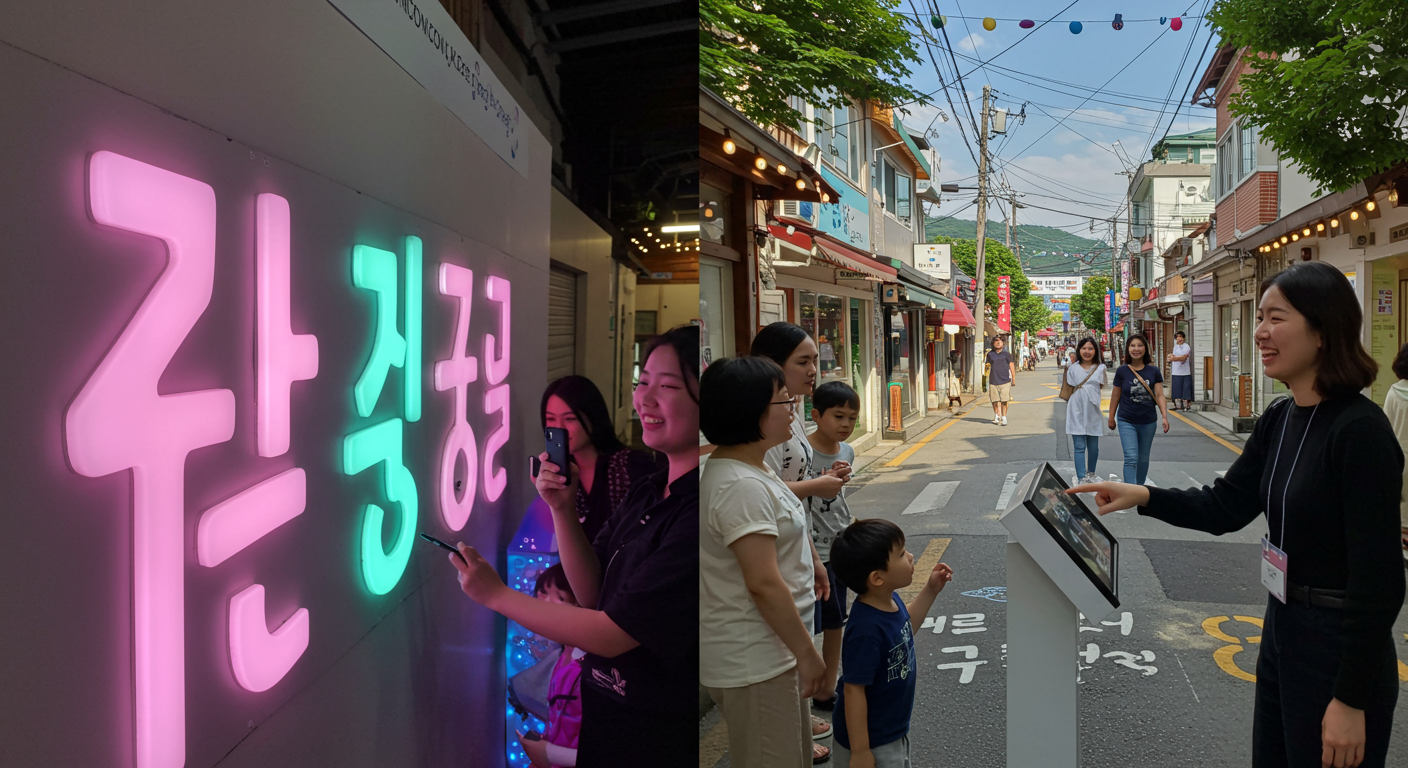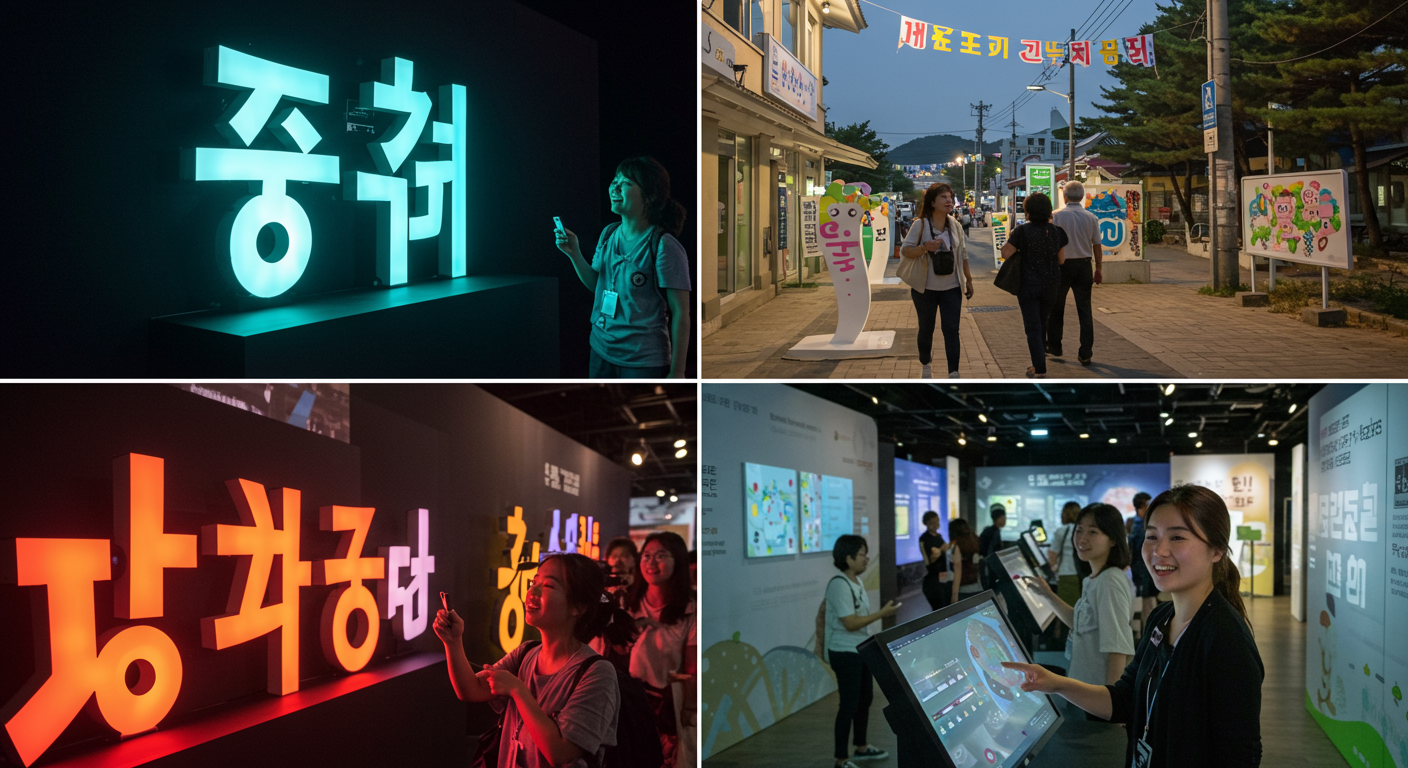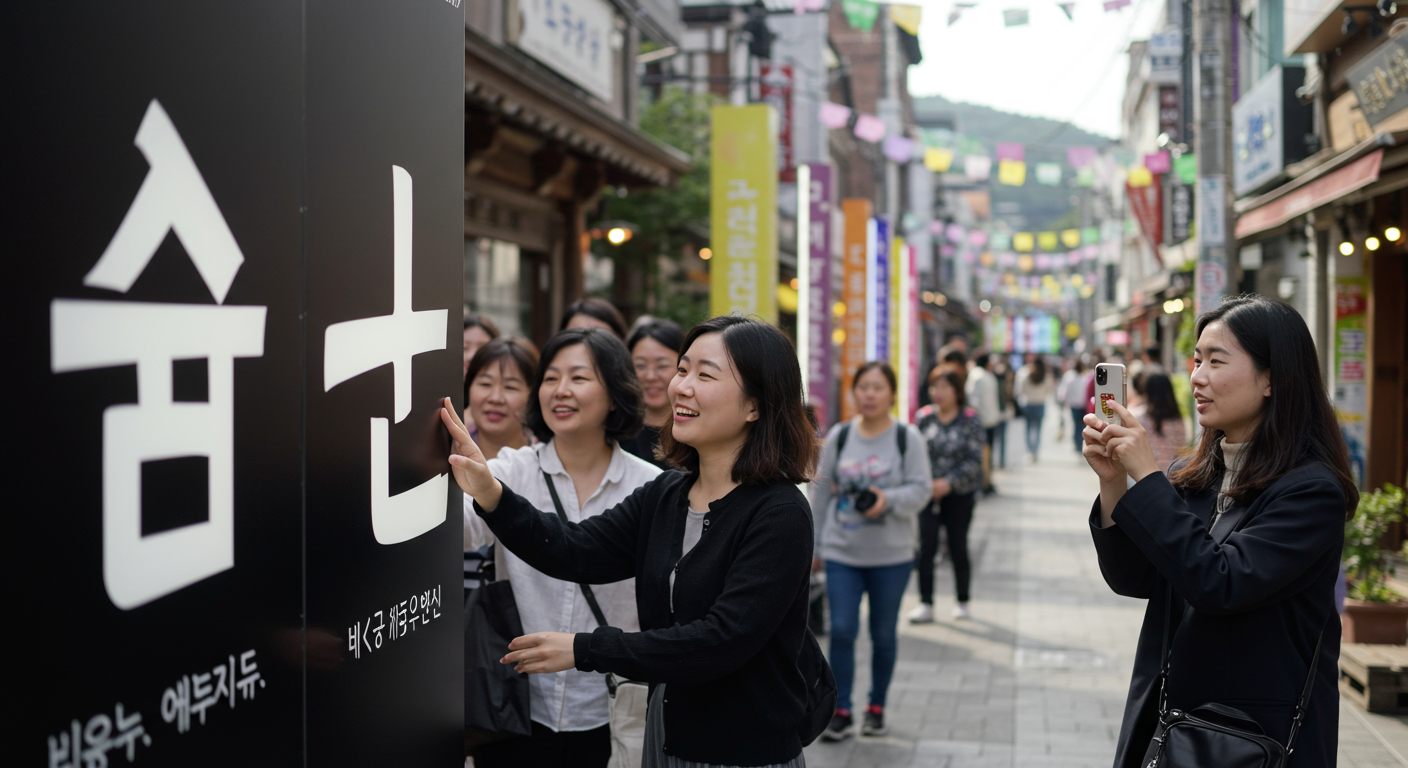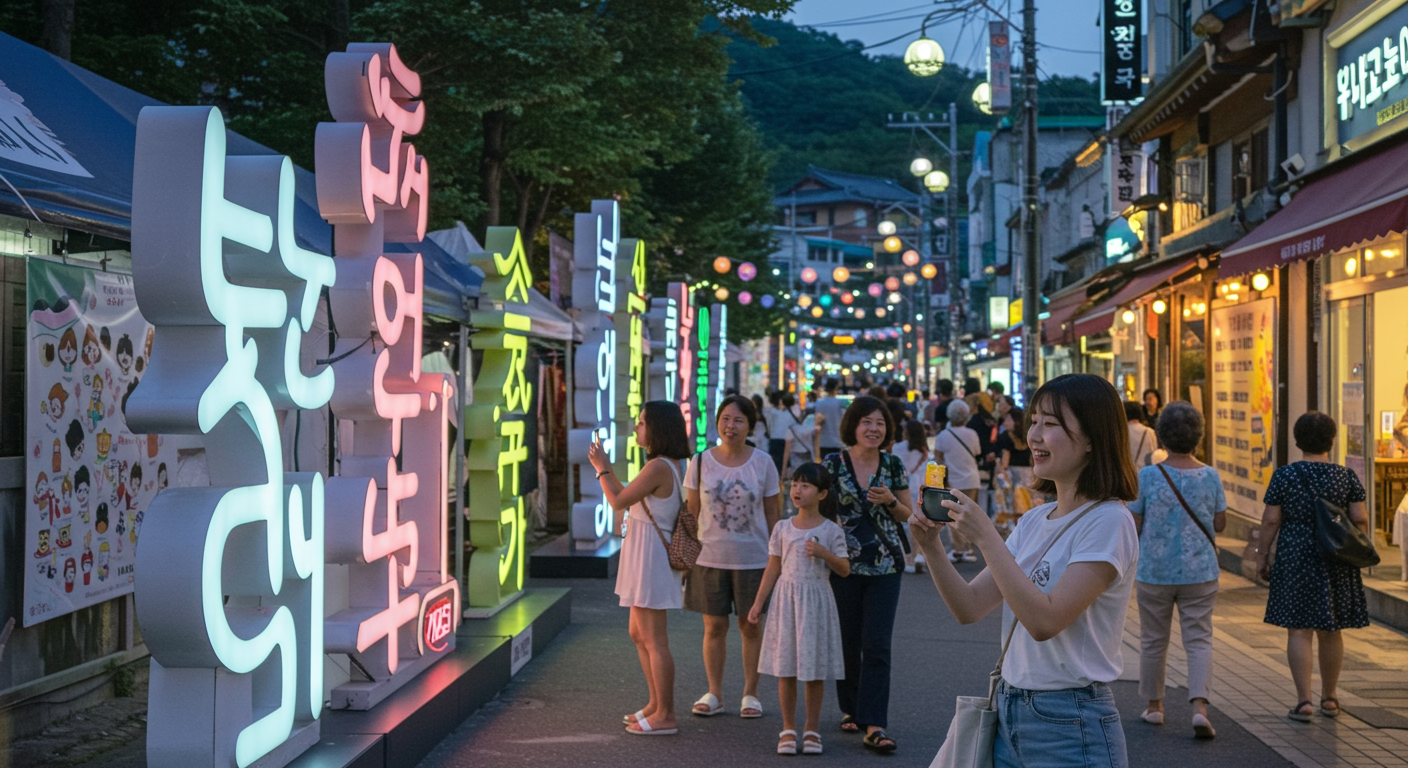Unveiling Hangeul: My Journey to Jochiwon's International Pre-Biennale
Unveiling Hangeul: My Journey to Jochiwon's International Pre-Biennale
Have you ever found yourself captivated by a language so beautifully designed it feels like art, a true testament to human ingenuity?
For years, I've been fascinated by the sheer elegance and scientific precision of Hangeul, Korea's remarkable alphabet. So, when I heard about the Hangeul International Pre-Biennale transforming the charming town of Jochiwon, I knew I had to experience it firsthand. It wasn't just another cultural event; it was an opportunity to dive deeper into the heart of Korean identity, right there in a buzzing, vibrant setting. Come along, and let me share what made this experience so uniquely special.
Table of Contents
Hangeul: More Than Just an Alphabet
If you've ever tried to learn a new language, you know how daunting the writing system can be. But Hangeul? Oh, it’s different. It's a linguistic marvel, truly. Created in the 15th century by King Sejong the Great, Hangeul was designed to be easy to learn and accessible to everyone, regardless of social status. It's built on a foundation of phonetic principles, with each character mimicking the shape of the mouth or tongue when producing the sound. How ingenious is that?
I remember the first time I really looked at Hangeul characters, trying to grasp the stroke order and the sound combinations. It felt like solving a beautiful puzzle, one that, once understood, unlocked a whole new world. This isn't just about reading and writing; it's about connecting with a culture, understanding a historical act of profound compassion, and appreciating a system that truly empowers communication. For me, it was a pivotal moment in my understanding of Korea, and honestly, a testament to thoughtful design. It makes me wonder, how many other everyday things could benefit from such thoughtful, user-centric creation?
 Description: "A close-up, vibrant photograph of stylized Hangeul characters illuminated on a modern art installation. The background is a slightly blurred, bustling outdoor festival scene at dusk, with diverse people of all ages admiring the art. The atmosphere is joyful and curious."
Description: "A close-up, vibrant photograph of stylized Hangeul characters illuminated on a modern art installation. The background is a slightly blurred, bustling outdoor festival scene at dusk, with diverse people of all ages admiring the art. The atmosphere is joyful and curious."
The Heart of Jochiwon: Hosting a Global Celebration
Jochiwon, a town often seen as a gateway rather than a destination, truly shone during the Hangeul International Pre-Biennale. It was an unexpected, yet perfect, choice. The idea of a "pre-biennale" itself suggests a kind of prelude, a teaser for something even grander to come, and it definitely built a sense of anticipation. This event, running from September 1st to October 12th, was more than just an exhibition; it transformed the entire town into an open-air gallery, an interactive classroom, and a buzzing hub for cultural exchange.
Walking through Jochiwon, I found myself constantly surprised. Modern art installations interpreting Hangeul's forms popped up in unexpected corners, while traditional calligraphy displays offered a serene contrast. Locals and international visitors mingled, all united by a shared curiosity. It really felt like the town itself had embraced the spirit of Hangeul – accessible, beautiful, and full of life. It’s not every day you see a whole community rally around something so deeply academic yet presented in such an engaging way. This approach, I thought, is how you truly bring culture to the masses.
 Description: "A wide-angle, sunny photograph of Jochiwon's main street adorned with colorful banners and contemporary Hangeul art installations. Pedestrians, a mix of young and old, are casually strolling and taking photos. The buildings in the background are a blend of traditional and modern Korean architecture, creating a festive, welcoming atmosphere."
Description: "A wide-angle, sunny photograph of Jochiwon's main street adorned with colorful banners and contemporary Hangeul art installations. Pedestrians, a mix of young and old, are casually strolling and taking photos. The buildings in the background are a blend of traditional and modern Korean architecture, creating a festive, welcoming atmosphere."
Experiencing the Biennale: What I Saw and Felt
My favorite part about attending these events is always the unexpected encounters. At the Hangeul Pre-Biennale, I stumbled upon a small workshop where an artist was demonstrating how to draw Hangeul characters using various mediums. I mean, who knew brush strokes could be so mesmerizing? I even tried my hand at it – and let's just say, my attempt at writing my name in Hangeul looked more like abstract art than anything legible. But it was fun!
Beyond the hands-on fun, there were thought-provoking discussions and exhibitions exploring Hangeul's role in the digital age, its aesthetic appeal in fashion, and even its influence on global linguistics. It wasn't just about admiring a writing system; it was about seeing how it continues to evolve and inspire. The energy was palpable, a blend of deep respect for tradition and an exciting embrace of innovation. It really gets you thinking about how heritage can be a dynamic force, not just a static relic.
To give you a glimpse of the breadth of the event, here’s a quick overview of some themes I noticed and what you should definitely try to catch:
| Theme Area | Highlights to Explore | My Takeaway |
|---|---|---|
| Hangeul in Art | Sculptures, digital projections, traditional calligraphy | Surprising versatility and aesthetic depth |
| Hangeul & Technology | Interactive apps, AI language tools, coding workshops | Future-proof design, easily adaptable |
| Hangeul & Daily Life | Street art, product design, fashion applications | Pervasive, beautiful, and deeply integrated |
 Description: "An interactive exhibit at the Hangeul Pre-Biennale, showing a young woman (20s, smiling) touching a digital screen that translates her spoken words into animated Hangeul characters. The background features other attendees of varying ages, engaging with different screens in a brightly lit, modern exhibition space, conveying wonder and engagement."
Description: "An interactive exhibit at the Hangeul Pre-Biennale, showing a young woman (20s, smiling) touching a digital screen that translates her spoken words into animated Hangeul characters. The background features other attendees of varying ages, engaging with different screens in a brightly lit, modern exhibition space, conveying wonder and engagement."
Planning Your Visit: Tips and Insights
If you're thinking of making a trip to Jochiwon for a similar event (or just to explore this charming town), I've got a few pointers from my own experience. Trust me, a little planning goes a long way to making the most of your cultural adventure.
- Check the Schedule in Advance: Festivals often have specific events on certain days. Look up workshops, performances, or talks you're interested in.
- Explore Beyond the Main Venues: Jochiwon's charm was in its scattered art. Wander off the beaten path; you might discover a hidden gem!
- Wear Comfortable Shoes: Seriously, you'll be doing a lot of walking. Good shoes are your best friend at any festival.
- Engage with the Locals: They often have the best insights into local spots or stories behind the art. Don't be shy!
- Carry a Portable Charger: Between taking photos and using navigation apps, your phone battery will thank you.
And hey, while you're there, grab some local snacks! Jochiwon has some pretty tasty treats that really round out the experience. After all, what's a cultural immersion without some delicious food?
 Description: "An aerial view of a vibrant Jochiwon street market during the day, bustling with people (diverse ages, casual attire). Stalls are selling various Korean street foods and crafts, with colorful Hangeul-themed decorations visible. The atmosphere is lively, authentic, and inviting, captured in a realistic photo style."
Description: "An aerial view of a vibrant Jochiwon street market during the day, bustling with people (diverse ages, casual attire). Stalls are selling various Korean street foods and crafts, with colorful Hangeul-themed decorations visible. The atmosphere is lively, authentic, and inviting, captured in a realistic photo style."
A Pre-Biennale typically serves as a preview or preliminary event leading up to a larger, full-scale Biennale. It often tests themes, showcases emerging artists, and generates buzz for the main event, much like a warm-up act before the headliner!
While the article doesn't specify the exact reasons, often smaller towns are chosen for cultural events to promote regional development, highlight unique local characteristics, and provide a more intimate, immersive experience away from big city crowds. Jochiwon's transformation into an artistic hub for Hangeul truly showed its potential.
Many learners find Hangeul remarkably easy to pick up, especially compared to other Asian writing systems. Its logical, phonetic structure makes it quite intuitive. The challenge usually comes with vocabulary and grammar, but the alphabet itself is often considered one of the most efficient in the world!
Based on my experience and similar events, you can expect a wide array of activities: art exhibitions featuring Hangeul, interactive workshops (calligraphy, Hangeul design), lectures on Korean language and culture, cultural performances, and perhaps even Hangeul-themed markets selling unique goods. It’s usually a feast for all senses, honestly!
The Hangeul International Pre-Biennale was an eye-opening experience, a true fusion of tradition and contemporary art, all centered around a language that continues to inspire. Don't miss future events like this!
Comments
Post a Comment